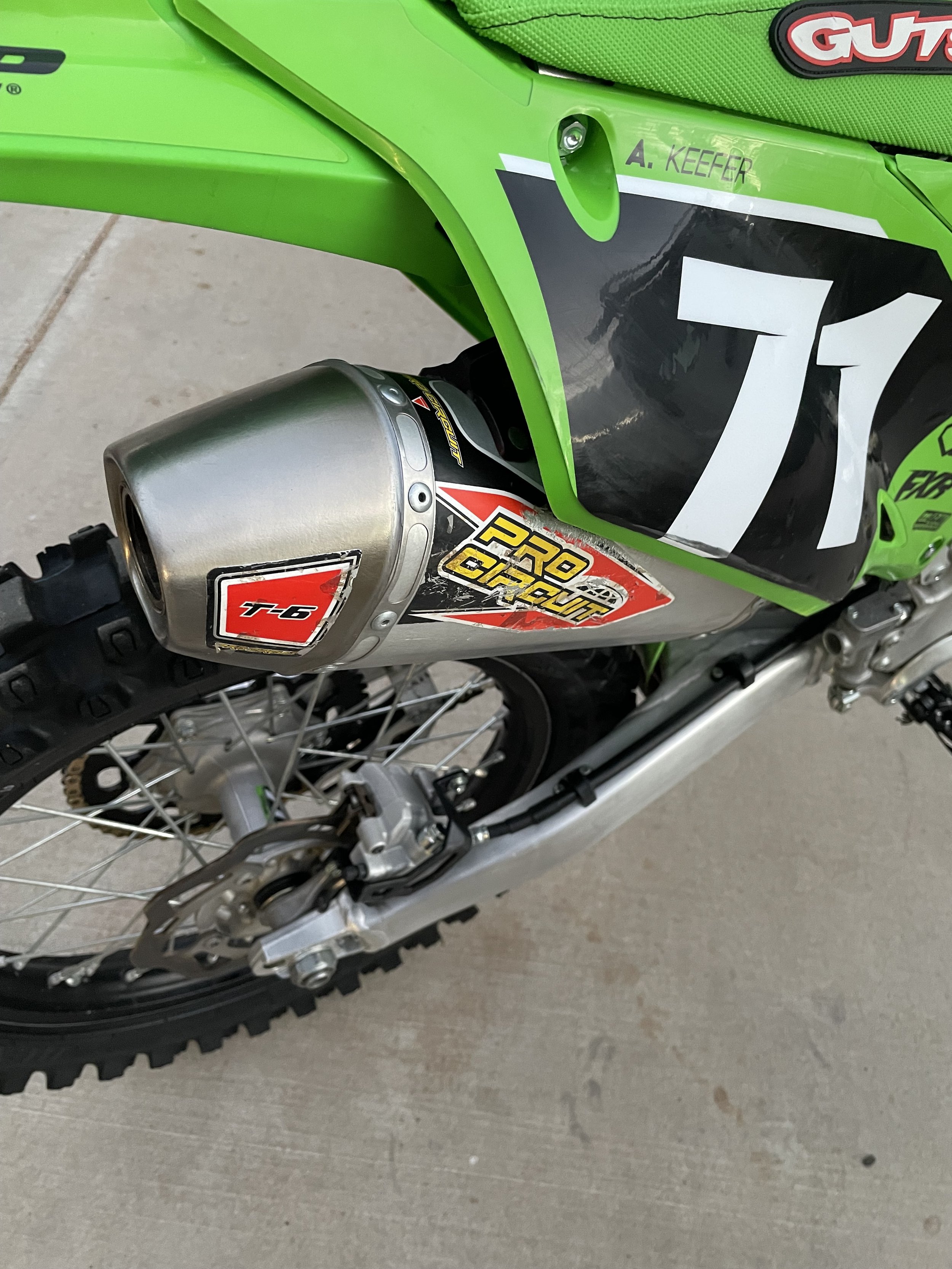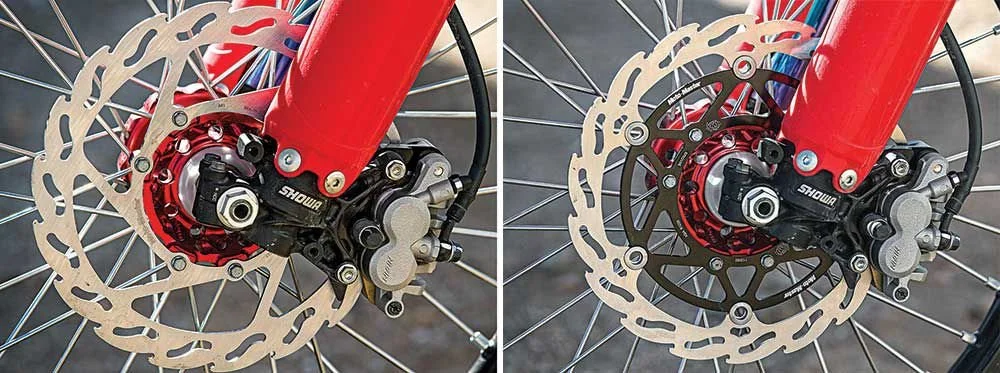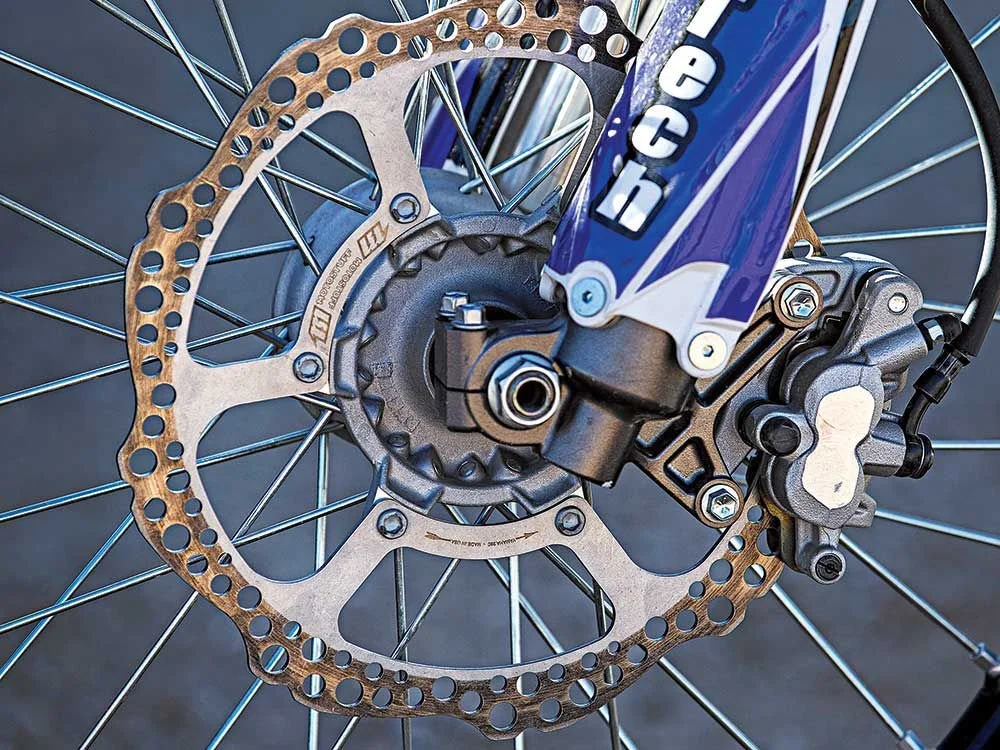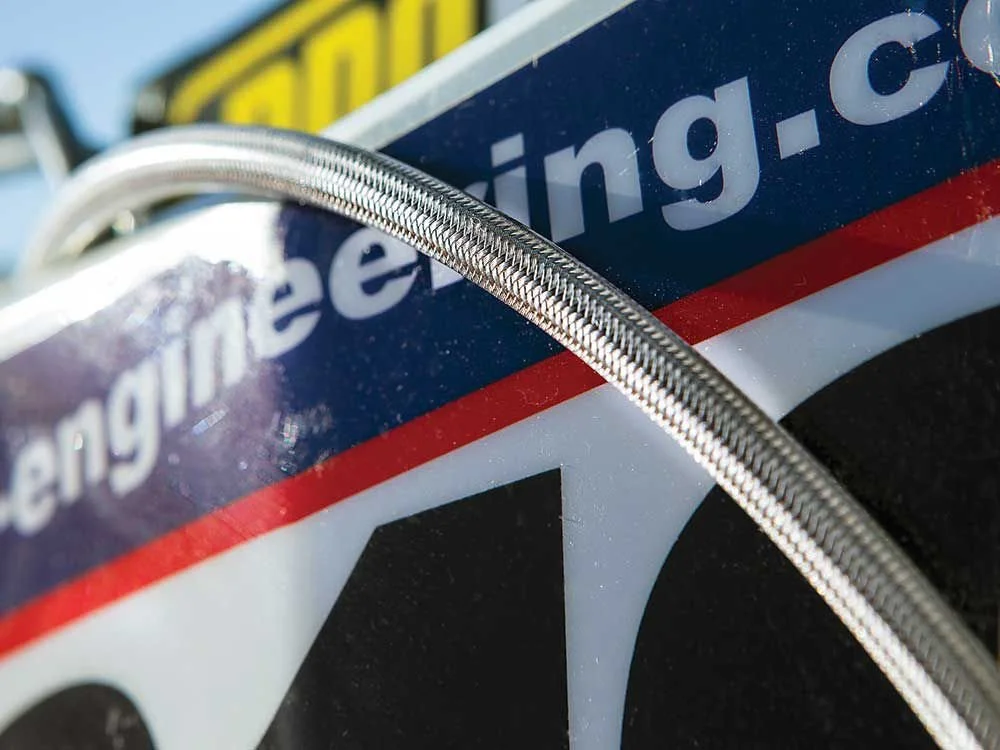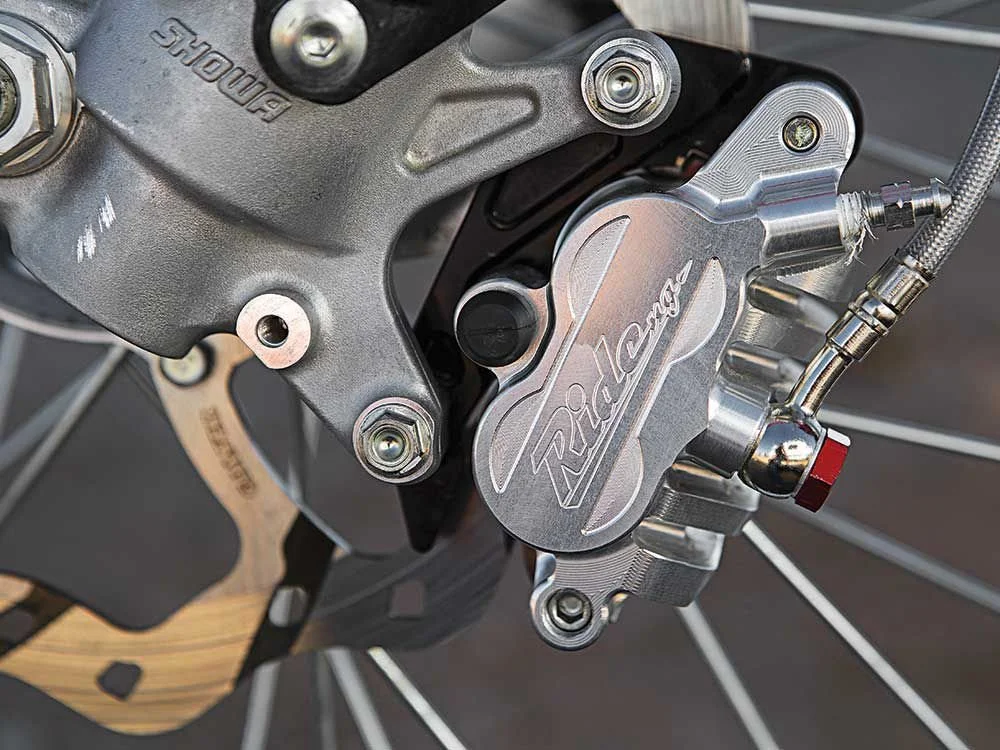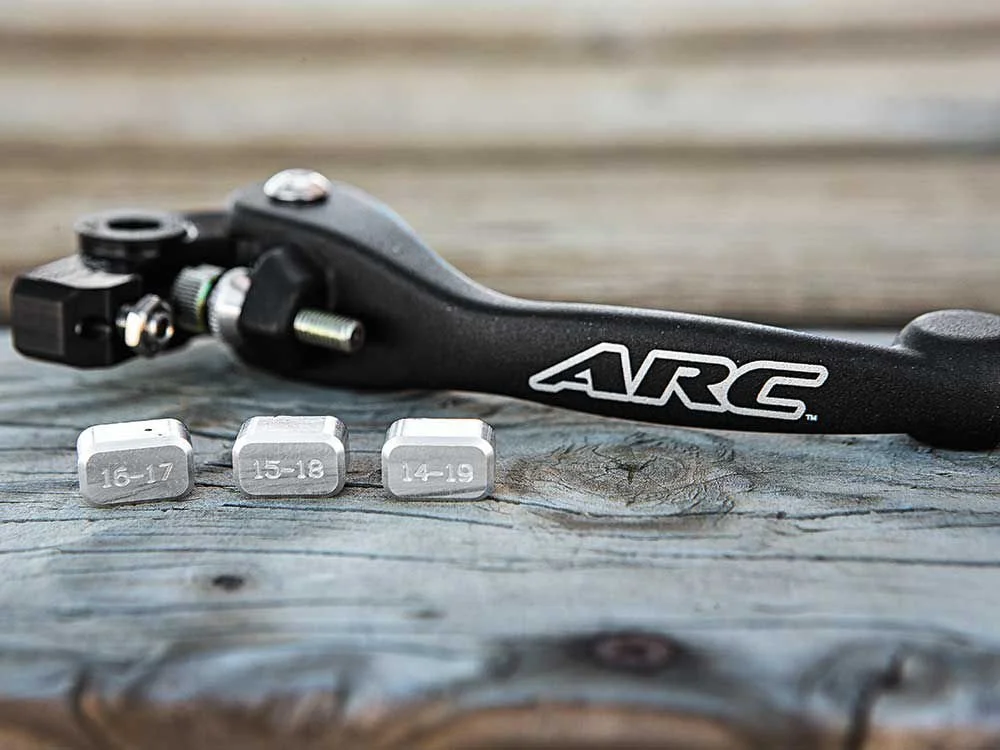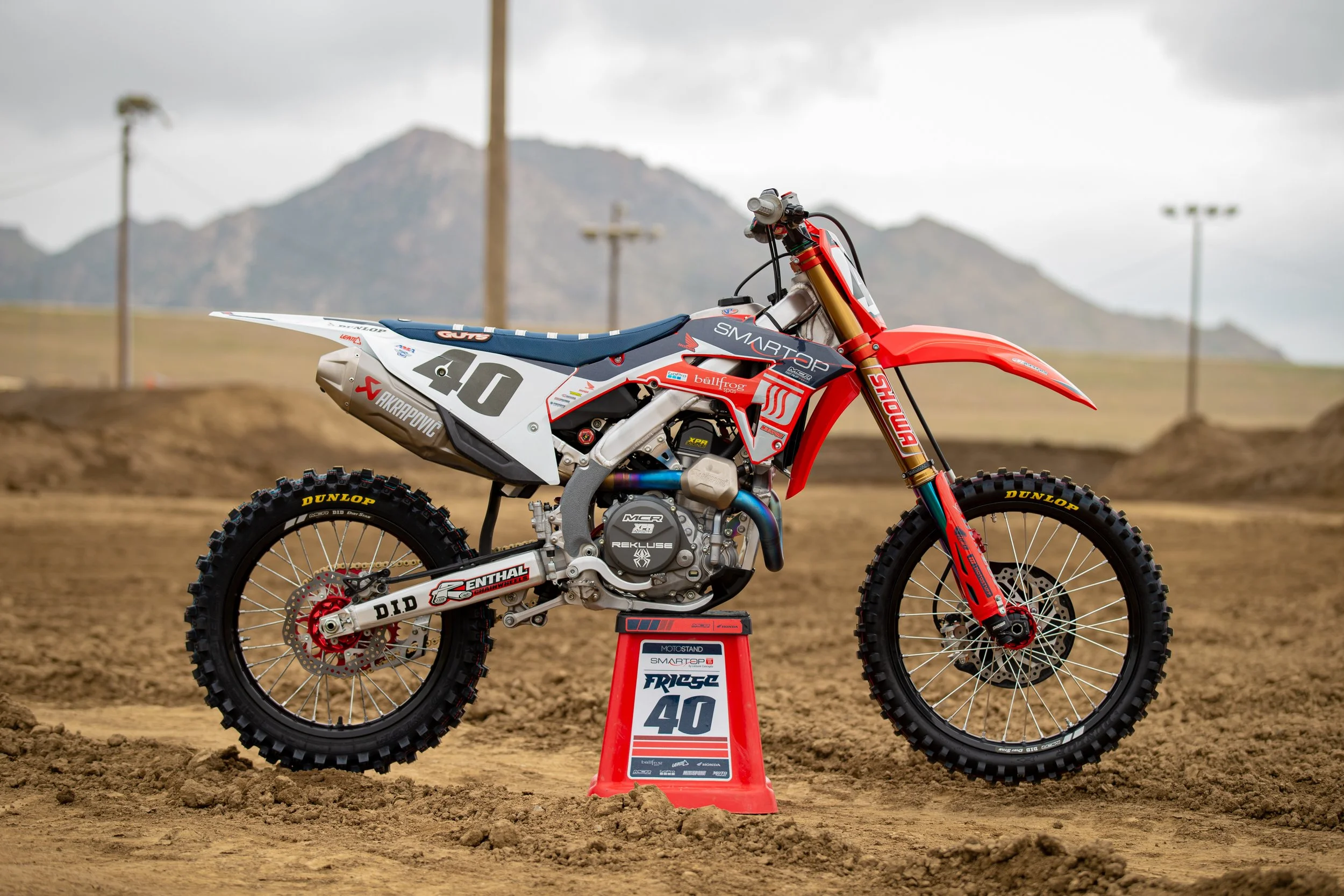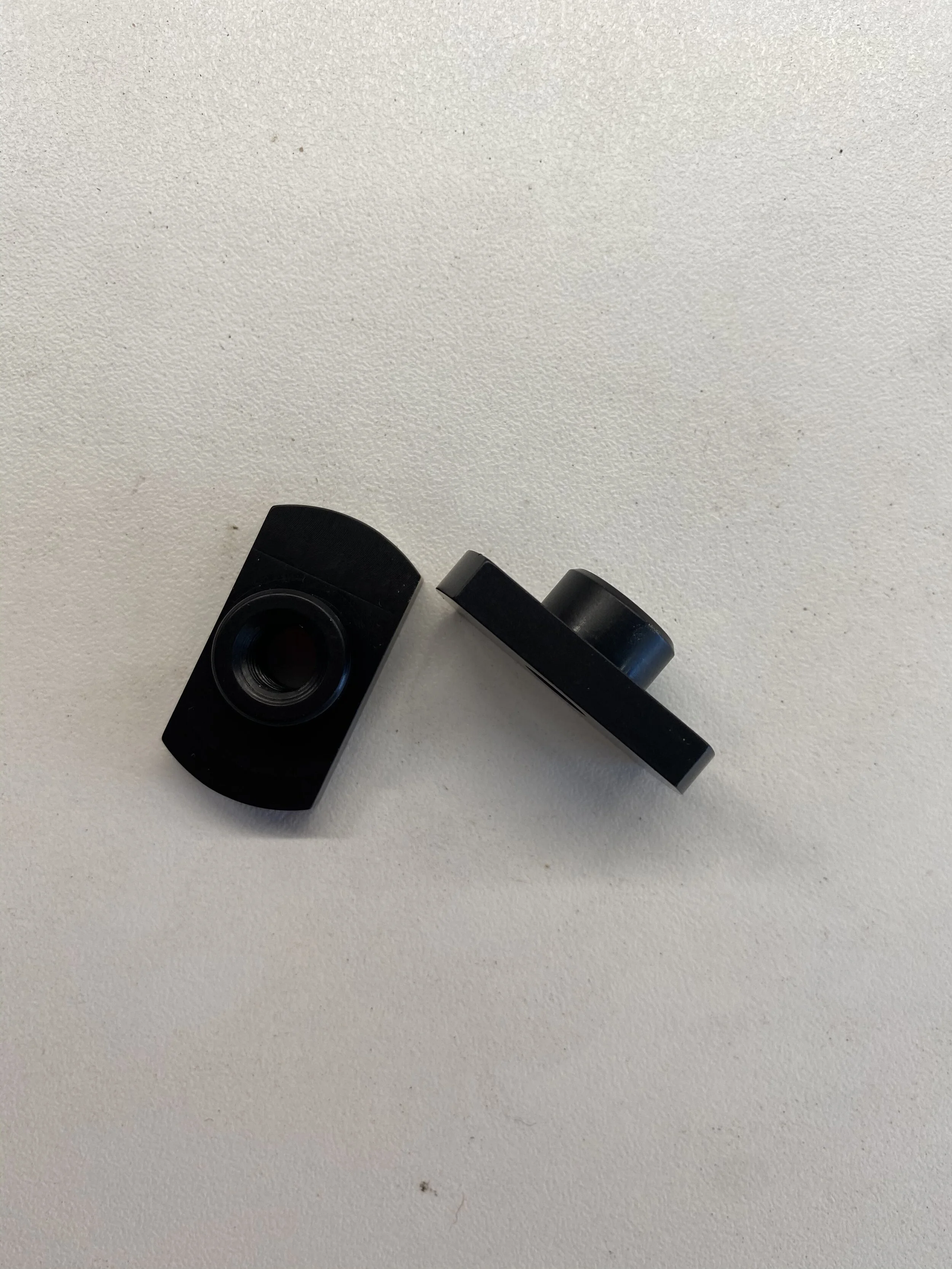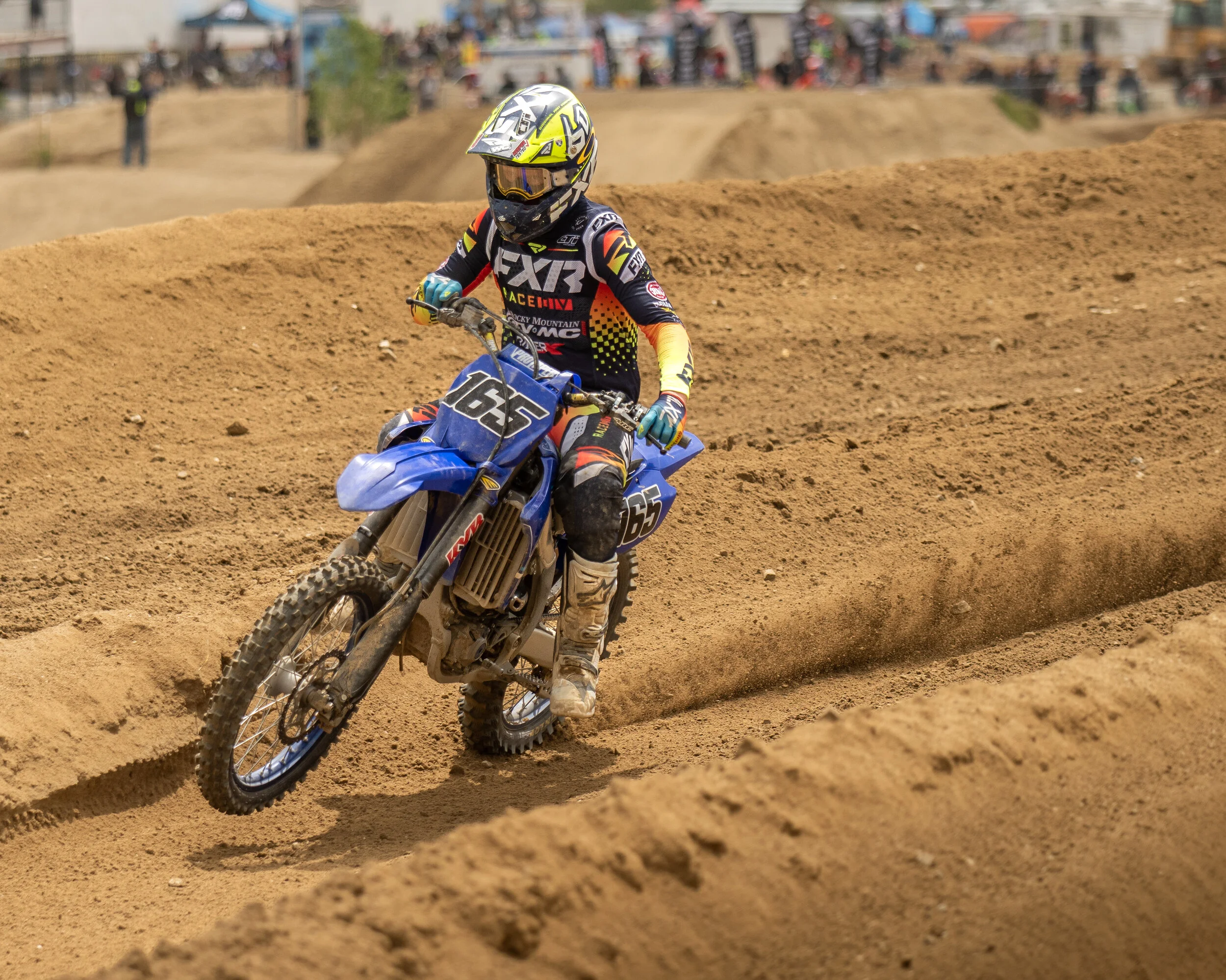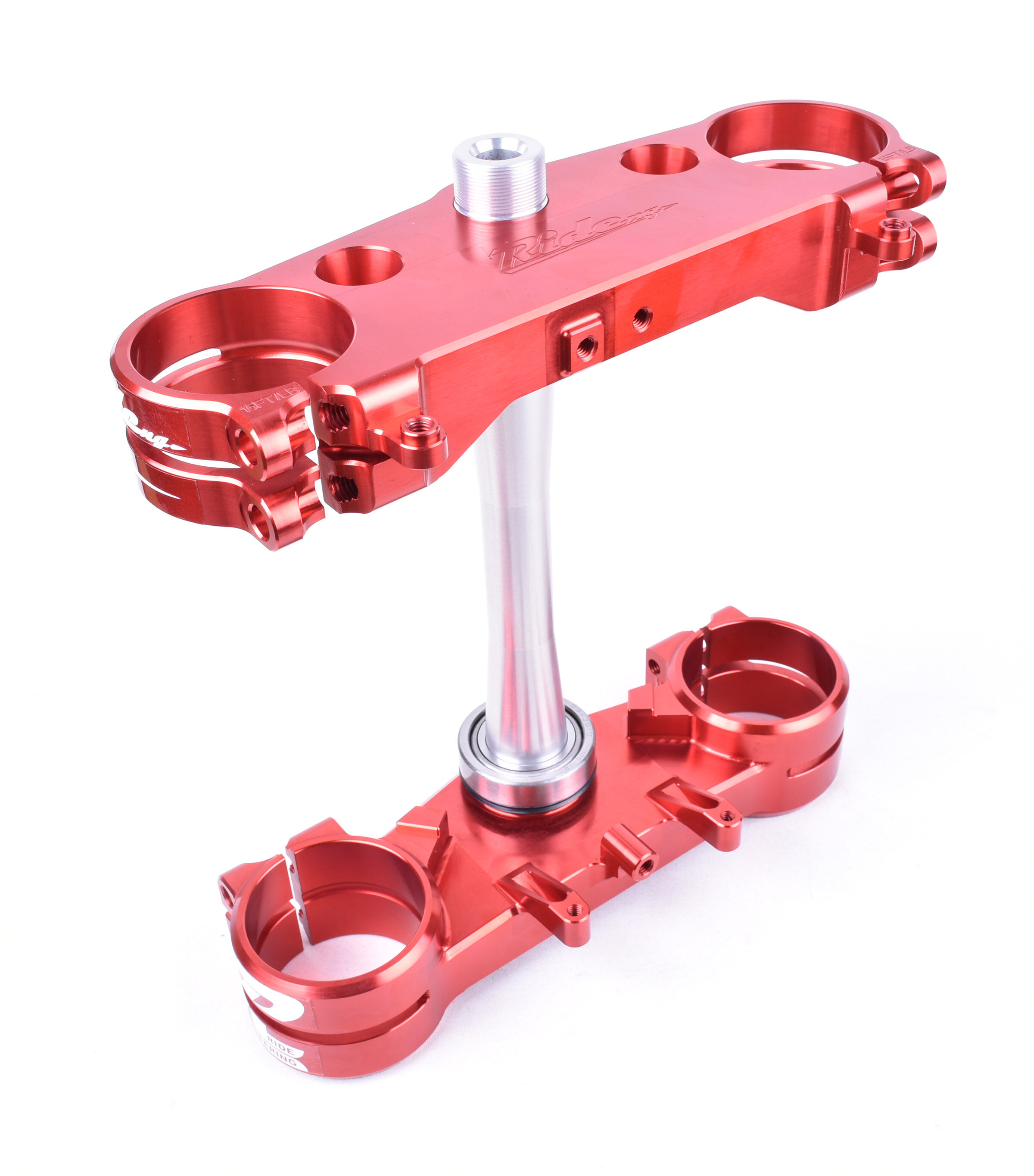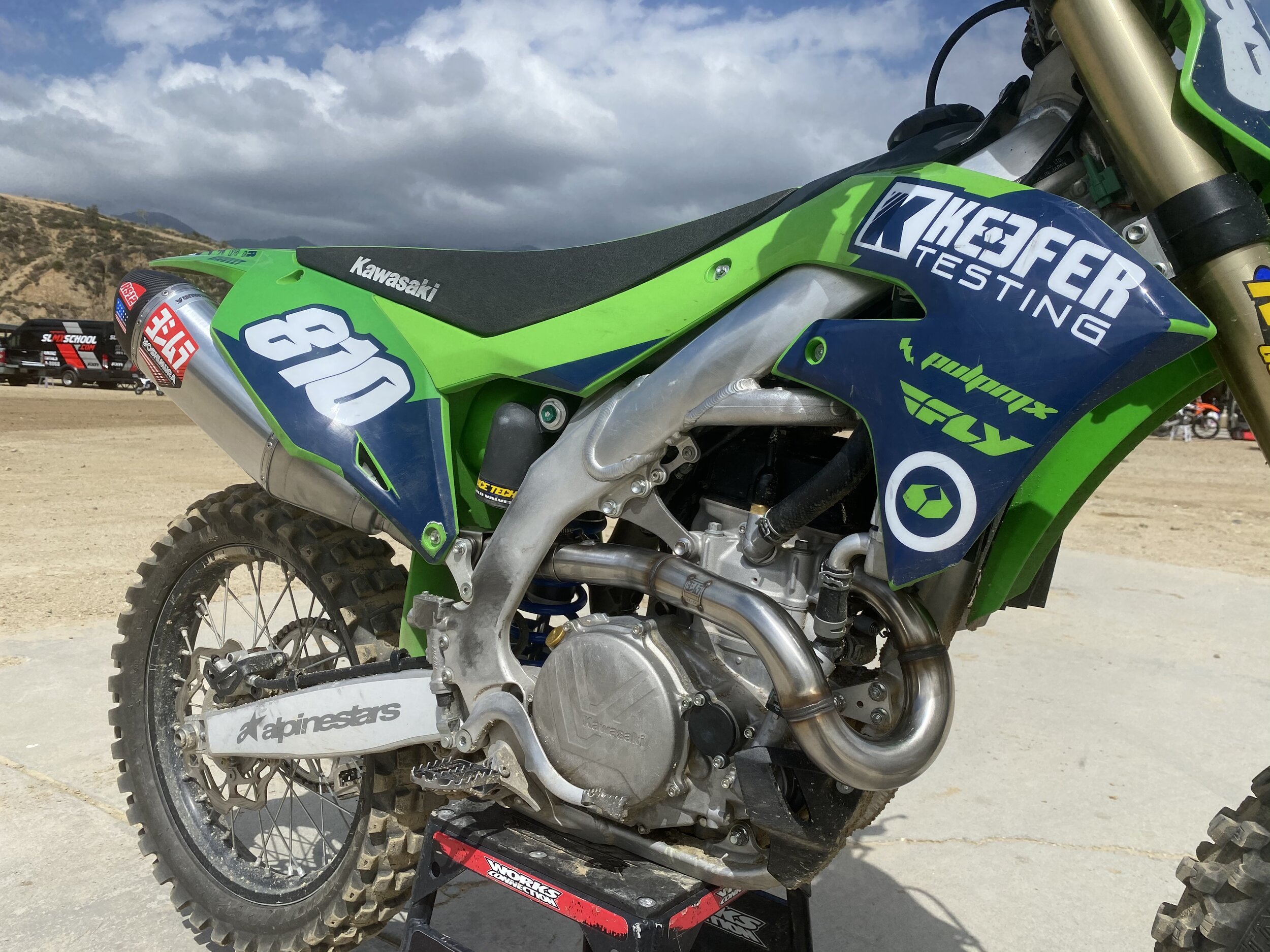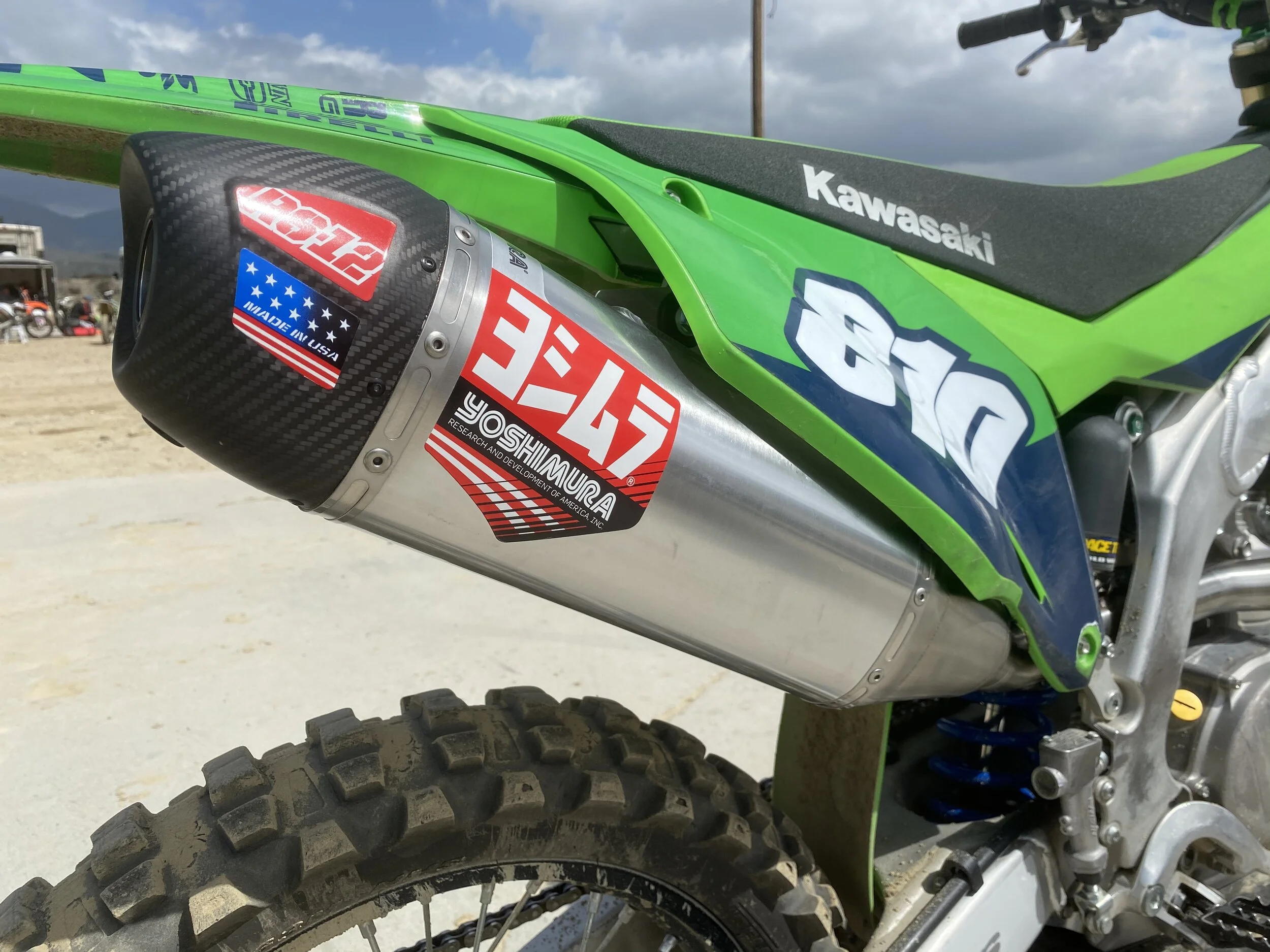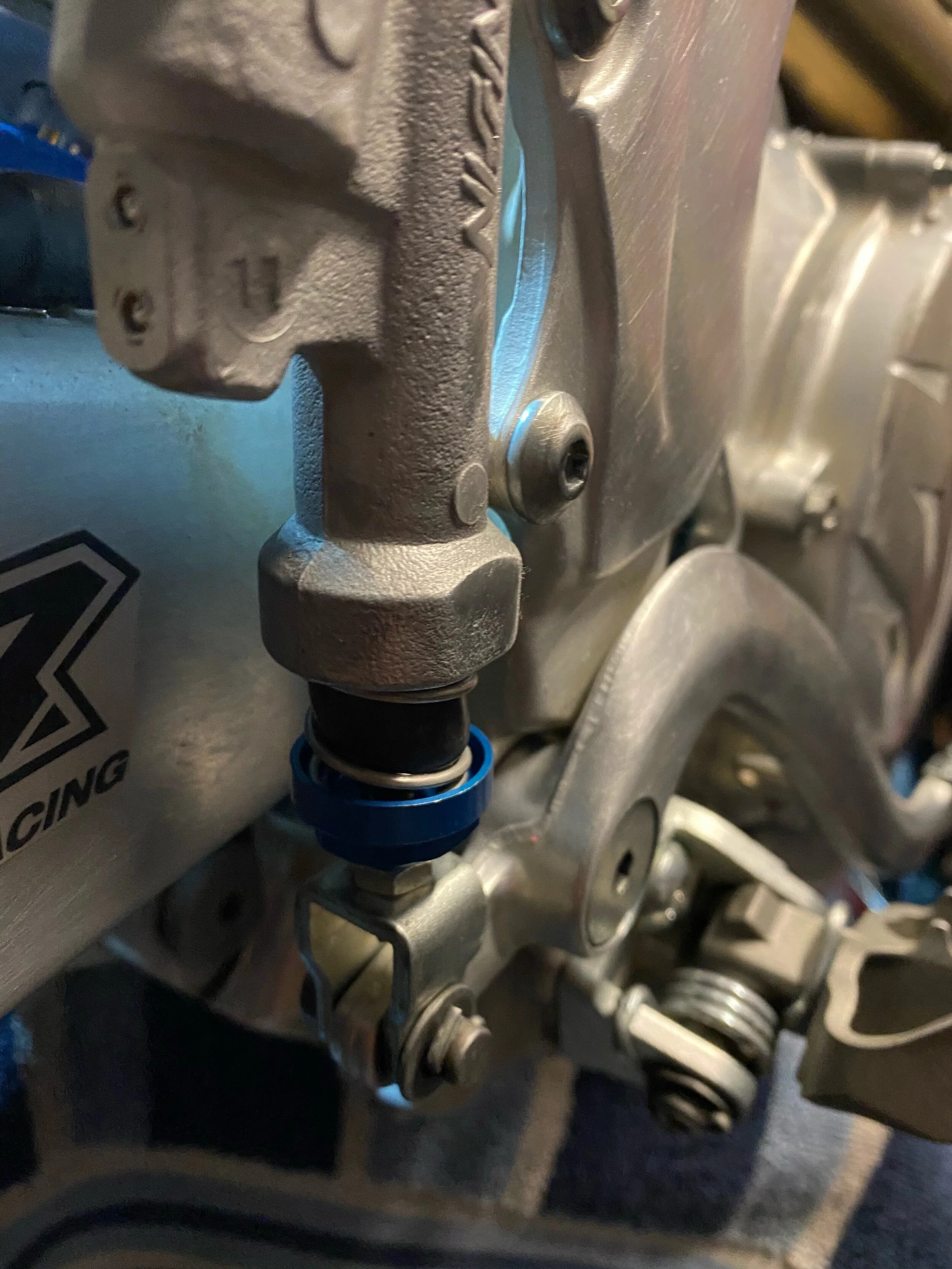The muffler on the stock 2022 KX250 sounds a little too blown out for me in stock form (even when new). The tone of the muffler is not pleasant to the ear, so I crossed my fingers, called Pro Circuit and picked up a T-6 (stainless system) Muffler System to see if it enhances the current engine character of the KX250. Ti-6 and Ti-6 Pro systems are tough to get at the moment so we settled on a stainless system, which can last longer (more durable) than a titanium system. While I had a PC system, I thought it would be cool to give you guys a run down on a couple other mufflers that I have tried on the KX250 and compare those with the PC (see below). Here’s what I came away with…
Immediately I weighed the stock and PC T-6 mufflers and took notice of how the Pro Circuit system cut just over 0.7 pounds off the green machine so we were starting off well. The next thing that made me happy was that the PC muffler goes on easy and literally took me 7 minutes to change out! Boom! So far so good! After installation I recruited my son to help me evaluate the system as he now has a new found love for the KX250 and a Team Green ride that didn’t exist last year. I made him write his notes down and I told him we would compare both of ours after we have tested this muffler at a few different tracks. We tested the T-6 at Glen Helen, Perris, secret dez tracks and State Fair MX just so we knew exactly what we were getting out of the PC system.
When you purchase your T-6 muffler it will come with a spark arrester screen already installed inside the muffler. DO NOT REMOVE THIS! This helps with back pressure and gives the KX250 the RPM response and bottom end that Aden (my son) and I both like. When we took it out the PC system lost some excitement down low and lost a little bottom end. You can however punch a small hole through the back of the screen and then reinstall it. Doing this actually helps give the PC system a little more bottom end/RPM response while still retaining that back pressure that is important for rear wheel connection.
Ok so now that we got the “tricks” out of the way, how does this PC system compare to stock?. Normally I DO NOT get more bottom end with a PC system (versus stock) on any brand of bike, but I was surprised that I got a little extra bottom end pulling power out of the PC system. RPM response is a little softer than the stock system, but when opening up the throttle out of corners the KX250 (with the PC system) pulls harder than the stocker. Mid range is where you will feel the meat of this power. When accelerating out of the corner and shifting to third, the KX250 doesn't have that “empty” feeling that the stock muffler has at times when the track is tilled deep. The PC system keeps pulling once the KX250 is shifted into third gear and continues to pull harder into the top end. Over-rev is as good as stock and I didn’t notice any loss of over-rev when swapping the two mufflers back and forth.
The only real negative I have found from the PC system is I wish it would have a little more low end RPM response, like the stock system. The stock muffler has such great initial touch of throttle which can make the bike feel a little lighter when hopping over bumps or popping out of blown out berms. The PC system pulls better out of corners, but is just a smoother initial touch (AKA, low end RPM response). If you want more low end RPM response and could stand to lose some pulling power then take the screen out of the T-6. Doing this will give you more low end RPM response, but will hurt some mid range and it will not sound as good in my opinion.
Overall Aden and I are pleased with the PC system for the 2021 KX250 and I guess we shouldn’t be surprised as they do have that Kawasaki race team and all. My son surprisingly felt most of the pulling power, but didn’t feel much increase anywhere else, so not bad for a 14 year old squirrel. Hey, Mitch! If you’re reading this, good job! Chanceability that he reads this? ZERO. POINT. ZERO!
Extra Credit: We tried a HGS and FMF system just to see what we had in the Pro Circuit T-6 Muffler System.
HGS: The HGS has a bottom end feel similar to the Pro Circuit system but not as good as a mid range pull. The HGS system has more top end than the PC and FMF system, but it takes a little work to get there. If I was riding a sand track, I could see how someone could like this system. Great top end-over-rev.
FMF: The FMF has more bottom end than the PC system and has slightly less mid range than the PC, yet more the than the HGS. Top End is short and over-rev has slightly less. than stock.

